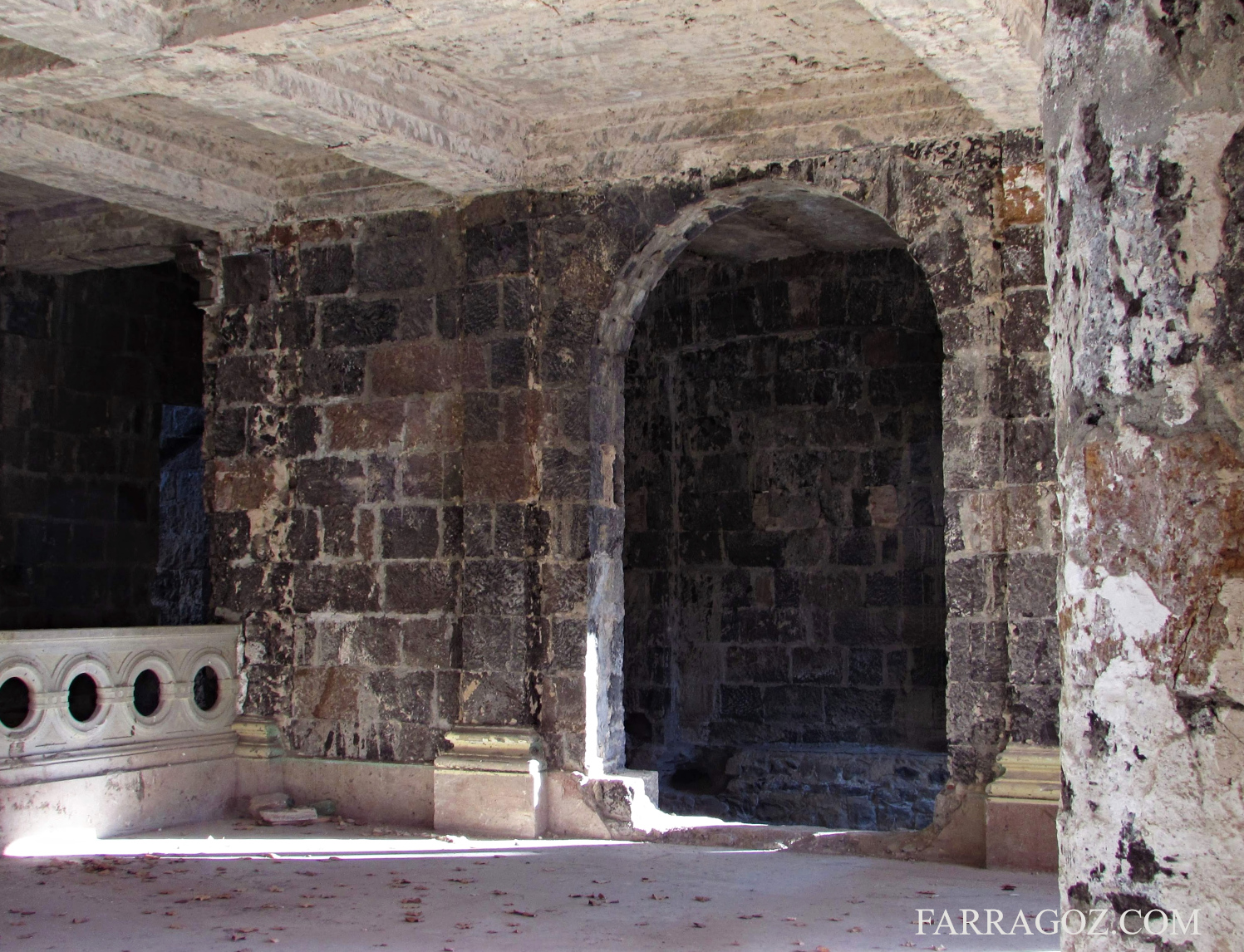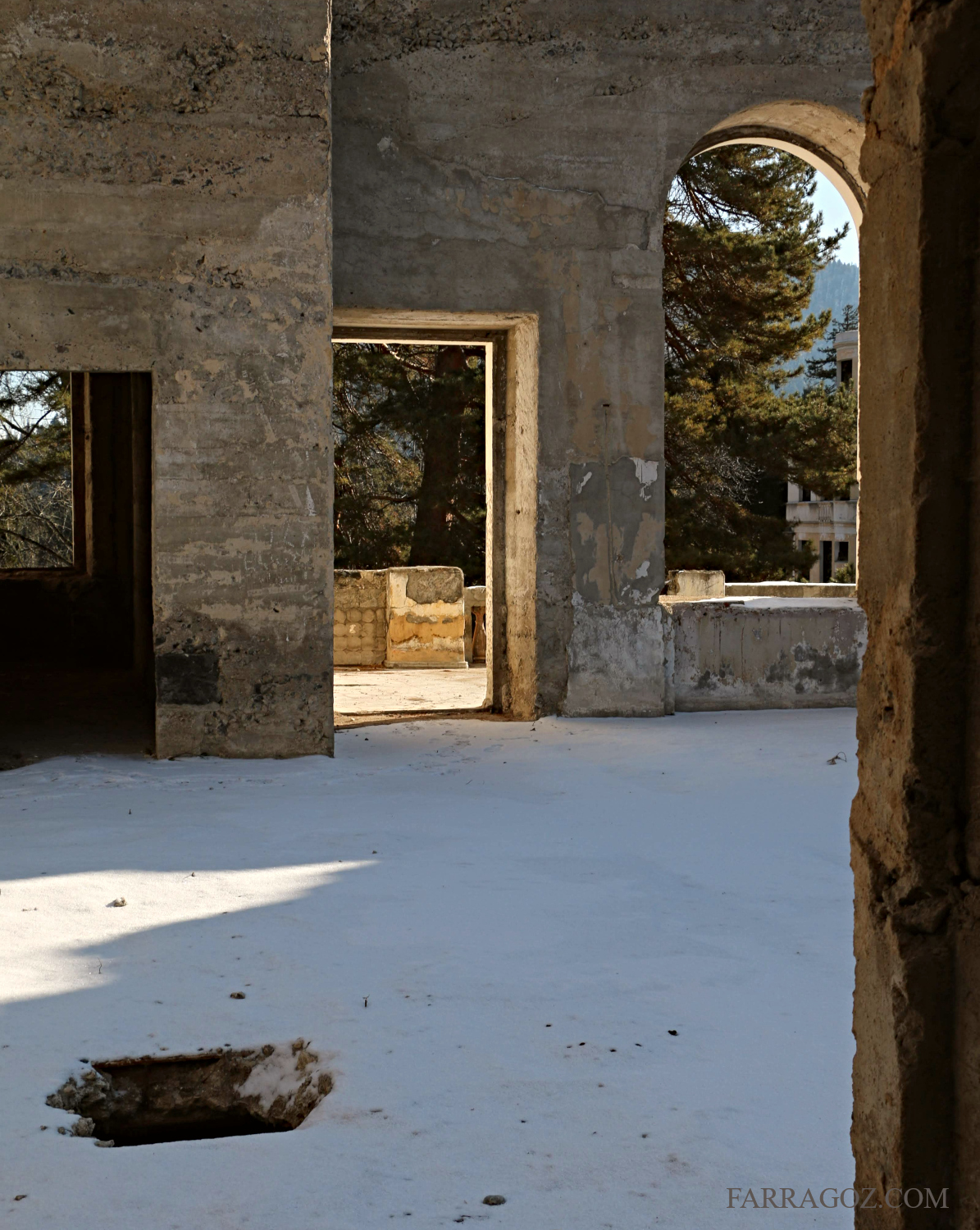Abandoned sanatoriums don't seem to be at the top of the list of places that Georgians (or Kartvelians, who are the people of the country of Georgia) will suggest one should visit while in their country. They will usually mention various monasteries and old fortresses, the popular wine regions, Prometheus caves, Borjomi (famous for its spring water and once favoured by the Romanov family), ski slopes of Bakuriani or Gudauri, Batumi on the Black Sea and, of course, Tbilisi. But the many disused sanatoriums of Georgia are seldom mentioned. Having once been magnificent in design, size and beauty, they are remnants of the Soviet era, and that's possibly one of the reasons why they don't seem to be regarded as national treasures. Or perhaps the typical tourist is simply not interested in decaying old buildings.

And so it happened that after spending three months in Bakuriani, taking several trips up and down the mountain on the narrow gauge Kukushka train to visit Borjomi, Tsagveri and Timotesubani, and plenty of hikes to explore this alpine area, we almost missed out on discovering the old Sanatorium Libani.
It was quite by chance that I came across this old photograph of the sanatorium on the internet, but I couldn't find much info. The empire-style design was the work of architect M. Kalashnikov. The main building was 153 meters long (about 502 feet) and consisted of 3 floors. The second floor of the building consisted of 80 rooms. I read that this sanatorium "was the first stronghold of the fight against tuberculosis", and the first director was Georgian scientist and public figure Nikoloz Gegechkori. From what I could gather, it was abandoned some 30 years ago.

With only a few days left before our departure to Tbilisi, and this newfound knowledge, we once again boarded the little Kukushka in a snow-covered Bakuriani.


After only a few kilometres down the mountain, we jumped off between the tracks at the small Libani station.


There was no time to waste as we had to catch the next train back up the mountain to Bakuriani. We immediately set off on foot, up a very slippery ice-covered track through pine forests, in search of the sanatorium. The sky above was insanely blue and the air so clean and crisp, I wished I could bottle all of it.
I knew from the description, the building had been a large structure, but I had no idea how much of it would remain intact. And, as is always the case when going on these discovery expeditions, we never know what to expect. Will we get access to the grounds or the buildings? Will we be trespassing? Will there be fierce guard dogs or ...? So, when the sanatorium came into view, sans any of the above mentioned, I couldn't contain my excitement. There was not a human in sight. Only a few horses were enjoying their breakfast in the morning sun.
I recognised the building from the old photo I had seen, but a lot had since changed in its appearance. It was in a sorry state. The entire top section was gone ...

... but the patina was beautiful. 
Moving around the building towards the back, we were surprised to find it was even larger than it appeared to be from the front. It was built in a kind of T-shape.

A flimsy barricade had been erected in most of the archways, using a wooden plank or two. From experience, we guessed this was more about keeping out cows and horses than humans. In the rural areas, these animals seem to roam and graze where they please.

After exploring the exterior of the building, we ventured inside and found ourselves in the main entrance hall.

It quickly became clear that the place was stripped of its decorative details. Only a few small remnants suggested that there had once been something rather beautiful here.


Leading off towards either side of the entrance hall were long, curved corridors. I soon realised there was no way to go down them.

Without any warning sign, the floor in front of me gave way to a drop into a cellar area, and I stood staring into a triple volume corridor.

Square gaps in the walls indicated where the original wooden beams for the floors were once built-in. I couldn't help wondering how many people walked these corridors over the years and what it may have looked like then.
Beyond the entrance hall were many large rooms. The word cavernous popped into my head, and it wouldn't leave. I felt I was in the belly of the beast.

I made my way up to the next level, and the views only got better.

There certainly was nothing small about the place.




I was able to get a closer view of the old urns and other exterior architectural details from the main balcony. They were badly damaged. Was it vandalism or natural decay? Perhaps a bit of both. It did, however, make for some exquisite natural patina.





And then, as I went back inside, the penny dropped. Not only had the interior been stripped of all its decorations. All the plaster from the interior walls had also been removed. There was no rubble or rubbish lying around. It had all been removed. The old sanatorium was in the process of being renovated.
What seemed to have been a large hall no longer had a roof; the floor was covered in snow ...
... and gaping holes lurked around corners.

Up, on the roof where there originally had been a structure spanning the entire length of the building on either side of the main entrance, we found only snow. There was no sign of what probably was a kind of pavilion or veranda for people to sit under, enjoy the view and inhale the fresh air.

I would have loved to do just that, but we had run out of time. We had to return to the station.

Standing at the rear end of the slow-moving Kukushka, watching the railway line as it seemed to glide out from underneath my feet and disappear into the distance along with everything else we had just passed, I thought: "This, here, is looking back on life. It is looking at the past. With every second that the train moves forward, I see where I've just been. And with every passing second, I'm moving further away from it. I'm seeing history. I love history. I love looking at things that have a history. I love discovering and exploring the past. So, why is it that watching this has me feeling both happy and a little sad?"
Probably because the entire morning, from first boarding the train in Bakuriani, the brisk walk through the forest, up to exploring the deserted Sanatorium Libani, was such a wonderful experience. Something to never fully experience again. If I ever get to make a trip to the old sanatorium again, it wouldn't be the same. It will all have changed. Right then, that morning was already history. It was all in the past like those trees we'd passed two seconds before. This idea saddened me, but it's all part of history. It's part of my history. Old Sanatorium Libani had become part of my history, and that made me happy. That, and the knowledge that this wonderful historic building was to be saved; not destroyed and forgotten. That made me happy, grateful and hopeful.
And who knows? Maybe in a few years, I'll make the trip again to meet the sanatorium in its new attire, and we'll share a few memories.
If you would like to read more about the Kukushka, you can do so here.
And in this post, you can learn more about the Soviet era sanatoriums.
Until next time...
... Happy Painting!
Tania
xxx
#patina
#paint #distressedpaint #onlinecourse #paintcourse #paintlessons
#homemadepaint #paintrecipe #traditionalpaint #caseinpaint #painted
#wornpaint #oldpaint #oldworld #scuffed #scuffedpaint #faded
#fadedpaint #learnhow #onlinetutorials #paintfurniture #paintedfurniture
#paintlikeapro #agedpaint #furniturepaint
#furniturefinishes #farragoz #paintfinishes #chippedpaint
#paintedwood #abandonedsanatorium #historic #architecture #Georgia #Sakartvelo
#history #preservation #SaveIt #sovietera #abandoned #abandonedbuilding
#Libani
#oldbuilding #Kukushka #brokenurn #oldurn #sanatoriumlibani







No comments:
Post a Comment